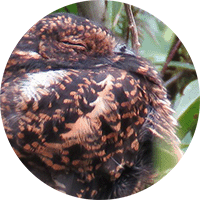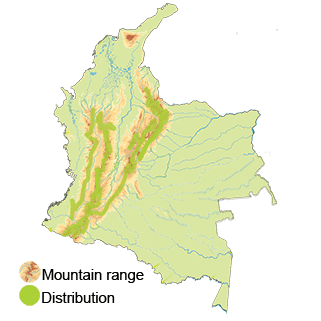Swallow-tailed Nightjar
The Swallow-tailed Nightjar (Uropsalis segmentata) Read in Spanish
Appearance: The Swallow-tailed Nightjar is a unique species known for its striking appearance. It has a predominantly dark plumage with bold white markings on its tail feathers, forming a distinctive swallow-like tail shape. The overall coloration helps this species blend in with its habitat and provides camouflage during the day when it rests on the forest floor.
Habitat: The Swallow-tailed Nightjar inhabits a variety of forested habitats, including tropical rainforests, subtropical forests, and montane cloud forests. It prefers dense undergrowth, forest edges, and areas with abundant leaf litter where it can roost and forage for insects, its primary diet.
Behavior: This nightjar species is primarily crepuscular and nocturnal, becoming active at dusk and during the night. It forages for insects on the wing, using its agile flight and specialized adaptations to catch prey in flight. During the day, it rests on the forest floor, relying on its cryptic plumage to avoid detection by predators.
Breeding: Breeding behavior in Swallow-tailed Nightjars often involves courtship displays by the males, which may include aerial acrobatics, vocalizations, and territorial behaviors to attract females. Females typically lay one or two eggs directly on the ground, relying on their cryptic coloration to protect the nest from predators.
Conservation Status: The Swallow-tailed Nightjar is currently classified as "Least Concern" on the IUCN Red List of Threatened Species.
Distribution
The Swallow-tailed Nightjar (Uropsalis segmentata)
Andean Region: In the Andean region of Colombia, the Swallow-tailed Nightjar may inhabit montane cloud forests found in departments like Cauca, Nariño, Putumayo, and others. The cool, misty forests with rich biodiversity in this region offer suitable conditions for the nightjar.
Northern Region: The Swallow-tailed Nightjar may also occur in the northern regions of Colombia, including areas in departments like Norte de Santander and Santander, where forested areas provide suitable habitat for the species.
Taxonomy
The Swallow-tailed Nightjar (Uropsalis segmentata)
- Kingdom: Animalia
- Phylum: Chordata
- Class: Aves (Birds)
- Order: Caprimulgiformes
- Family: Caprimulgidae
- Genus: Uropsalis
- Species: Uropsalis segmentata
Vocalization
The Swallow-tailed Nightjar (Uropsalis segmentata)
- Churring Calls: The most common vocalization of the Swallow-tailed Nightjar is a distinctive churring sound produced by the male during courtship displays. This call is often described as a rhythmic, mechanical "churr-churr-churr" or "purrrr-purrrr-purrrr" repeated at intervals.
- Whistling Calls: In addition to churring calls, the Swallow-tailed Nightjar may produce whistling calls that can vary in pitch and duration. These calls are often used in communication between individuals, especially during interactions related to territory defense or courtship.
- Ticking Calls: Another vocalization that the Swallow-tailed Nightjar may use is a rapid, ticking sound that is produced during territorial disputes or aggressive encounters with other individuals.
- Singing From Perches: When perched on a branch or forest floor, the Swallow-tailed Nightjar may also emit soft, melodious trills or whistles that contribute to its overall vocal repertoire.




